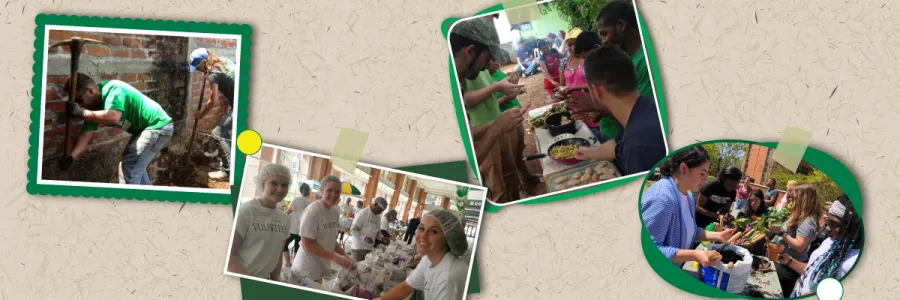Following the destruction of Hurricane Helene, UNC Charlotte has established the Niner Cares: Hurricane Relief Fund to directly support the students, staff, and faculty at three of the Universities in North Carolina most affected by the storm.
Donations to this fund will benefit our sister institutions Appalachian State University, UNC Asheville, and Western Carolina University as they continue to assess damages and begin rebuilding and returning to learning, teaching, and working once it is safe to do so.
The American Red Cross is also accepting donations to assist with their disaster relief efforts across the Southeast in the wake of Hurricane Helene. You can give monetary donations on their website or by calling 1-800-RED-CROS (733-2767)
You can also donate directly to the Disaster Fund of Appalachian State University. Donations raised through this fund will be used by App State to assist disaster relief for those on campus and in the surrounding community.
Our Definition of Community Engagement:
The process of building mutually beneficial partnerships with community organizations and taking an active, immersive role in working toward a collective vision through conscious education, direct and indirect service, and reflection for positive change.
Philosophy of Disaster Relief:
The office of Leadership & Community Engagement provides and supports opportunities for UNC Charlotte students to take an active role in the larger Charlotte community. One of the ways communities often come together is after a disaster strikes. While Leadership and Community Engagement does not provide the direct service opportunities/donation drives when a disaster strikes, we do want to ensure students, faculty, and staff uphold responsible and ethical volunteering. Individuals often want to come together for those communities affected by disasters in the form of goods/food/clothing drives. However, these are not always the most helpful and can often do more harm than good. In these cases, it is important to research and follow the suggested actions from disaster agencies. Please use the following resources as guidelines:
Donating money should be the first action considered. Monetary donations can be put to immediate use and provides flexibility for the nonprofits to help people in emergencies. Additionally, monetary donation puts money back into the local communities where the disaster occurred.
- Student Emergency Fund
- American Red Cross Disaster Relief
- Ready NC Disaster Relief
- Check out this list of organizations vetted by NCVOAD (NC Voluntary Organizations Active in Disaster)
Any other disaster relief efforts, move forward cautiously.
Only donate items if the items are specifically solicited by the nonprofits. If items are not needed, do not donate them. In fact, in-kind donations are usually detrimental to relief efforts.
- The sudden influx of physical items shipped to the disaster area need to be sorted and stored in a storage facility. This process detracts volunteer time and financial resources from serving community members in immediate need. Nonprofit organizations often refer to this as the ‘Second Disaster.'
- Many of the items donated during disaster collections are not relevant or needed. In fact, this produces more work for the citizens affected after a disaster because it takes time to dispose of these unneeded items.
- Transporting or shipping items, especially heavy items, can be costly. It is faster and more efficient to donate funds to nonprofit organizations that purchase the items directly within the disaster region. By purchasing needed items from the affected region, Nonprofits are able to put money back into the local economy where the disaster occurred.
- Transporting or shipping items is a timely process. Additionally, the sorting and additional transferring of these physical items within the disaster region also takes time. Donating funds is the fastest way to help.
- Sometimes collected items can even be forgotten and go to waste during the chaos.
Do research beforehand and do not go to disaster locations unless invited. Oftentimes when disasters occur nonprofit organizations will seek out the assistance of volunteers with specific skills such as carpentry skills, medical skills, etc.
- Check out local nonprofit volunteer opportunities on ShareCharlotte.org
- Donate Blood to the American Red Cross
- NCVOAD
